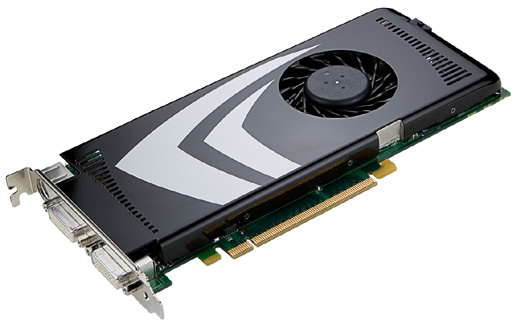

Find low everyday prices and buy online for delivery or in-store pick-up. They're arranged into four clusters of 16 shaders and share eight texture units that are able to both address and filter one texture per clock.Shop XFX NVIDIA GeForce 9600 GT 512MB DDR3 PCI Express Graphics Card at Best Buy. Being a single-slot card, the NVIDIA GeForce 9600 GT draws power from 1x 6-pin power connector, with power draw rated at 95 W maximum.Despite being a part of the GeForce 9-series, it uses the same unified shader architecture as the GeForce 8-series – the G94 chip gets its performance from the 64 1D scalar stream processors which, at Nvidia's reference speed, run at 1,625MHz. The GPU is operating at a frequency of 650 MHz, memory is running at 900 MHz. Based on my rather shaky measurements, G94's surface area is around 225mm² and it packs around 505 million transistors into that space – in other words, that's around two thirds of the G92 transistor count.NVIDIA has paired 512 MB GDDR3 memory with the GeForce 9600 GT, which are connected using a 256-bit memory interface.
But it's usually come with the refresh product. While this is a good thing, it's not something we haven't seen in the past from both Nvidia and ATI. The ROPs use the updated design featured in G92, meaning there's support for the new compression technologies that help to improve the efficiency so that the chip is less reliant on bandwidth usage than G80's ROPs were.Given that there's basically the same ROP hardware as G92—both in design and quantity—you'd be right to assume that the GPU has the same 256-bit wide memory interface. Each of the partitions can process four pixels per clock and there's also support for 32 pixels per clock, per ROP partition, if all pixels are sampled with just the Z component. The clusters are set out in the same way that Nvidia has used ever since it released its GeForce 8600-series powering G86 graphics chip.Nvidia's G94 graphics chip in diagrammatic form…Moving to the back end of the chip, there are 16 ROPs split into four partitions of four, just like there is in G92. Additionally, each of the shader clusters has its own independent cache, but Nvidia opts to keep its size confidential – it also doesn't detail what clock speed the cache is associated with either, but I think it's safe to say that it's running at the lower speed because of its association to the texture sampling hardware.
...
With a probable exception made for the GeForce 8800 GTX in certain scenarios.


 0 kommentar(er)
0 kommentar(er)
